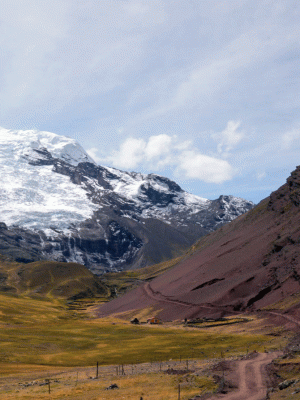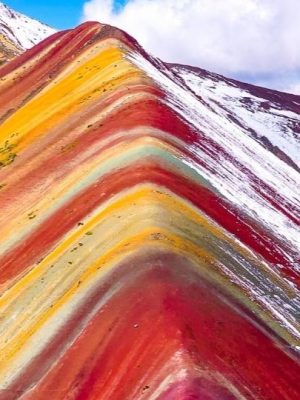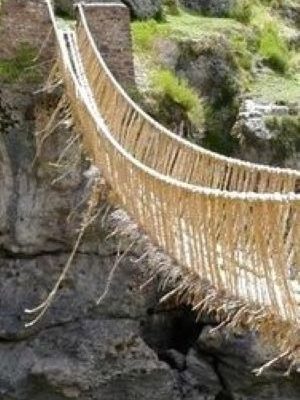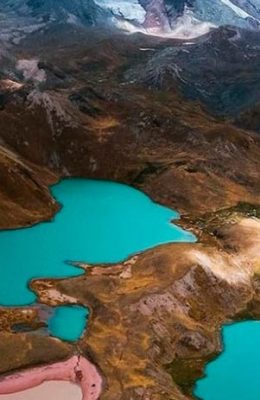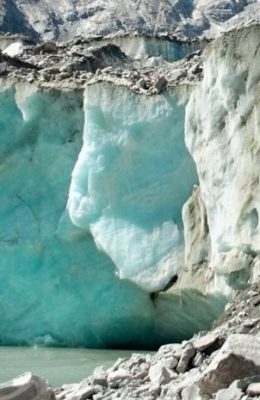CUSCO CLASSIC
Cusco, known as the “Archaeological Capital of the Americas” and the ancient capital of the Inca Empire (Tahuantinsuyo), is a fascinating city that blends Inca and Spanish colonial architecture.
Architectural Syncretism: The historic center is famous for its cobblestone streets and buildings that demonstrate the superposition of Spanish culture over the Inca stone foundations, as seen in the Qoricancha (Temple of the Sun), upon which the Convent of Santo Domingo was built, and the Inca walls of the Twelve-Angled Stone.
Plaza de Armas: This is the heart of the city, surrounded by the imposing Cathedral Basilica of the Virgin of the Assumption and the Church of the Society of Jesus, both built on ancient Inca palaces.
Historical Significance: It was the political, administrative, and religious center of the vast Inca empire and preserves a profound mystical and cultural atmosphere.
Introduction
cusco
Cusco, known as the “Archaeological Capital of the Americas” and the ancient capital of the Inca Empire (Tahuantinsuyo), is a fascinating city that blends Inca and Spanish colonial architecture.
Architectural Syncretism: The historic center is famous for its cobblestone streets and buildings that demonstrate the superposition of Spanish culture over the Inca stone foundations, as seen in the Qoricancha (Temple of the Sun), upon which the Convent of Santo Domingo was built, and the Inca walls of the Twelve-Angled Stone.
Plaza de Armas: This is the heart of the city, surrounded by the imposing Cathedral Basilica of the Virgin of the Assumption and the Church of the Society of Jesus, both built on ancient Inca palaces.
Historical Significance: It was the political, administrative, and religious center of the vast Inca empire and preserves a profound mystical and cultural atmosphere.
Difficulty and Preparation
- Dificultad: Moderada a alta debido a la altitud y al terreno irregular.
- Preparación: Es imprescindible aclimatarse a la altura antes de iniciar la caminata.
- Equipo: Ropa térmica, botas de trekking, bastones de trekking, protector solar y equipo de camping.
4 DAYS-3 NIGTHS
CLASSIC CUSCO ITINERARY: 4 DAYS / 3 NIGHTS
This program is designed to immerse you in the ancient history, culture, and architecture of the Inca Empire and the colonial era.
DAY 1: Arrival in Cusco and City Tour in the Afternoon
- Morning: Arrival at Velasco Astete International Airport (CUZ). Meet with your representative and transfer to your hotel. The morning is usually free to rest and acclimatize to Cusco’s altitude of 3,400 meters above sea level (11,152 feet). Drinking coca tea is recommended.
- Afternoon (1:00 PM – 6:30 PM): CITY TOUR
- Visit the Qoricancha (Temple of the Sun), where you can admire the masterful fusion of Inca and colonial architecture.
- Explore the impressive Cusco Cathedral in the Plaza de Armas.
- Travel to archaeological sites outside the city:
- The imposing military fortress of Sacsayhuamán.
- The ceremonial center of Q’enqo.
- The Puka Pukara military checkpoint.
- The water temple of Tambomachay.
- Overnight: Overnight in Cusco.
DAY 2: Sacred Valley of the Incas and trip to Aguas Calientes
- Morning (8:00 a.m. – 4:00 p.m.): SACRED VALLEY TOUR
- Start your full day exploring the fertile Urubamba River Valley.
- Visit Pisac: Explore its intricate agricultural terraces and browse the famous artisan market.
- Stop in Urubamba for a delicious Andean buffet lunch.
- Explore the village and the spectacular fortress of Ollantaytambo, an imposing Inca fortress that still preserves its original streets and structures.
- Afternoon/Evening (4:00 p.m. onward): Travel to Machu Picchu Pueblo
- Transfer to the Ollantaytambo train station.
- Take a scenic train ride (approximately 1.5 to 2 hours) to Aguas Calientes (Machu Picchu Pueblo), located at the foot of the citadel.
- Meet with your guide to finalize details of the next day’s tour.
- Night: Accommodation in Aguas Calientes.
DAY 3: Machu Picchu Citadel and return to Cusco
- Early Morning: Visit to Machu Picchu
- Take the early morning bus (or walk) to the entrance of the Inca Citadel of Machu Picchu (2,430 m.a.s.l. / 7,972 ft.).
- Enjoy a guided tour (approximately 2 to 3 hours) of this magnificent site, covering key areas such as the Temple of the Sun, the Intihuatana, and the main plazas.
- Free time afterward to take photos and explore the citadel at your own pace (within the limits of the tour).
- Afternoon: Return by bus to Aguas Calientes. Time for lunch (not included).
- Evening: Return to Cusco
- Board the train from Aguas Calientes back to the Ollantaytambo or Poroy station.
- Transfer by bus or van from the train station to your hotel in Cusco.
- Overnight: Overnight in Cusco.
DAY 4: Free morning and departure
- Morning: Free time for personal activities. This is a great opportunity to:
- Visit local museums or the San Blas artisan neighborhood.
- Shop for last-minute souvenirs.
- (Optional): If your flight departs in the late afternoon, you may want to consider an optional half-day excursion to Maras and Moray (must be booked in advance).
- Convenient time: Transfer from your hotel to the Cusco airport for your return flight.
- Please note: The exact schedule, hotel category, and type of train service depend on the tour operator and the package you book.
INCLUDES + ROUTE DETAILS
• Transportation
Pickup from your hotel in Cusco.
Transportation to the trek starting point.
• Meals
Breakfast, lunch, and dinner during the trek.
Snacks (tea, hot water, cookies).
Cook and assistants during the trek.
• Safety
First aid kit.
Emergency oxygen.
• Entrance fee (15-20 soles)
• Tips
Before the Hike
Acclimatization: Arrive in Cusco at least 2 or 3 days early to acclimatize to the altitude.
Pre-workout: Hiking, running, or light cardio to build endurance.
Sleep well: Avoid staying up late or drinking alcohol the day before.
Equipment and Clothing
Small backpack (30-40 L): To carry water, snacks, a camera, a coat, and essential items.
Large backpack (60-70 L): If you don’t hire additional porters (mules often carry some of the weight).
Layered clothing:
Quick-drying t-shirts.
Fleece jackets or a mid-layer.
Waterproof jacket and windbreaker.
Thermal clothing for the evenings (it gets very cold in Soraypampa).
Trekking footwear: Sturdy, comfortable, and waterproof boots.
Lightweight sandals/sneakers: For resting at camp.
Hat, sunscreen, and sunglasses (the sun is intense at high altitudes).
Gloves, hat, and scarf (it can get cold in the early morning).
Headlamp with extra batteries.
Sleeping bag rated for -10°C (if not, rent one).
Food and Hydration
Bring a reusable bottle or camelback (minimum 1.5-2 L).
Water purification tablets or a personal filter.
Energy snacks: nuts, chocolate, cereal bars.
Avoid alcohol and large meals during the trip.
Health and Safety Tips
Hike at your own pace, without rushing (especially on the ascent to Salkantay Pass, 4,650 m).
Use coca leaves or sorojchi pills if you experience symptoms of altitude sickness.
Protect yourself from the cold at night and the daytime sun (sudden changes in weather).
Bring a personal first aid kit: pain relievers, band-aids, and your own medications.
Always follow the guide’s instructions.
Extras to Consider
Pay in soles (for swimming, additional snacks, tips, and the Cocalmayo hot springs).
Swimsuit and a light towel if you plan to go to the hot springs.
Camera with extra battery (electricity isn’t always available for charging).

